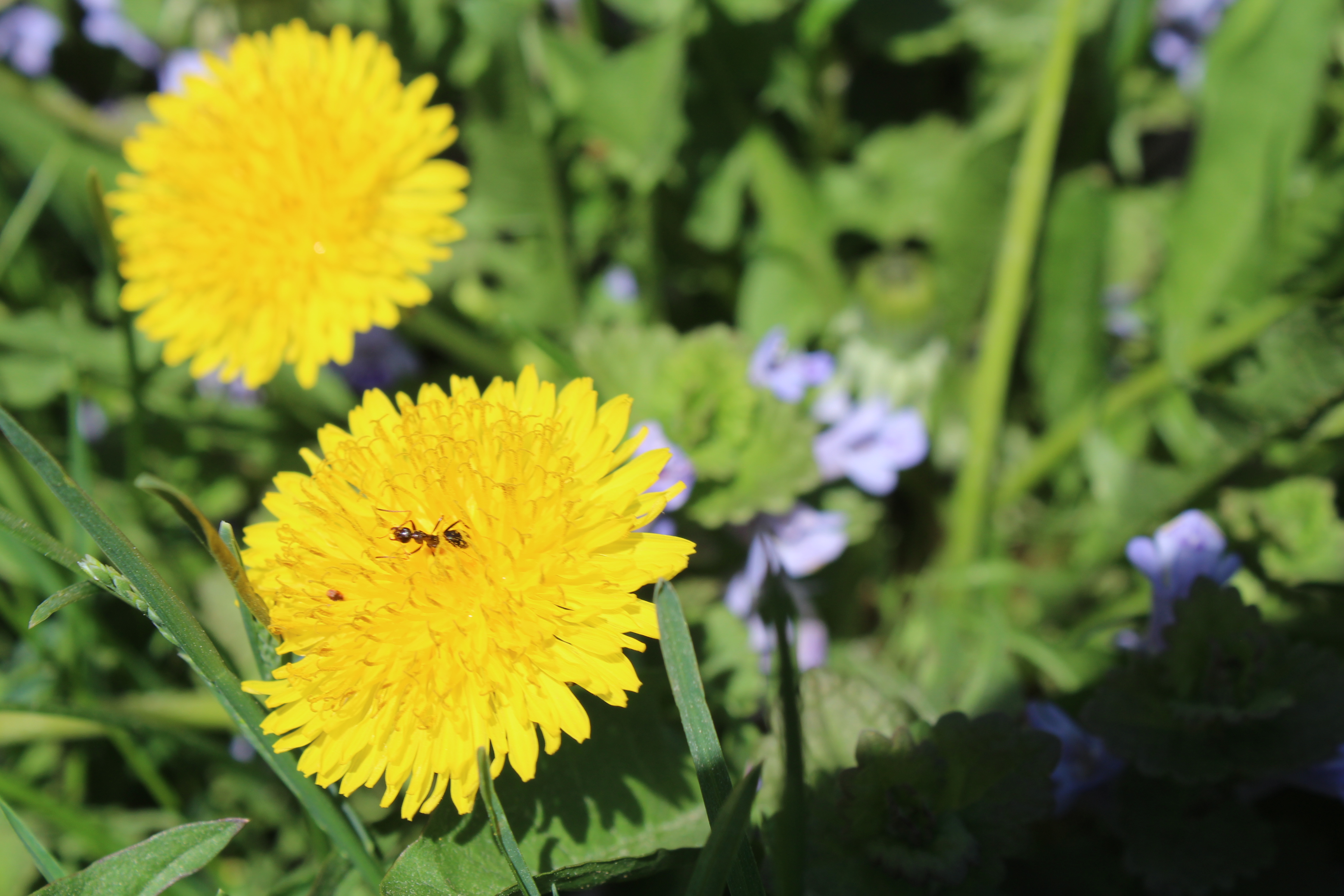Dandelions. they’re everywhere in the yard shining their yellow faces to the sun, brightening the ground along with the deadnettle, henbit and violets. Extermination is the plan for most lawn owners. Those bright yellow flowers scattered across a lush green monochrome seem to disturb the senses of the modern eye. This is a fairly new development in the history of this ubiquitous plant. Poets through the ages have appreciated the dandelion in verse, such as this by Walt Whitman:
Simple and fresh and fair from winter’s close emerging,
As if no artifice of fashion, business, politics, had ever been,
Forth from its sunny nook of shelter’d grass—innocent, golden, calm as the dawn,
The spring’s first dandelion shows its trustful face.
Or this one by Hilda Conkling:
Little soldier with the golden helmet,
O What are you guarding on my lawn?
You with your green gun
And your yellow beard,
Why do you stand so stiff?
There is only the grass to fight!
Actually, the “little soldier” has a lot to fight today, including pesticides, specialized tools for digging them up, and the lawn mower.
The dandelion (Taraxacum officinale) is not thought to be native to North America. In fact, it is likely that early settlers brought dandelion seeds with them because they were aware of the dandelion’s medicinal properties. They probably enjoyed seeing those familiar yellow flowers in the spring, too.
Dandelions have carried many names over the centuries. The current name comes from the French for tooth of the lion, perhaps because of the shape of their leaves. But the French also called it piss-a-bed because of its diuretic properties. Other names include clock flower, cankerwort, Irish daisy, monk’s-head, priest’s-crown, puffball, blowball, milk-witch, and yellow-gowan. Each of these names pertains to some characteristic or curative property of the lowly fellow.
The first thing a dandelion does when it germinates is install a rosette of tiny leaves at ground level. The second thing it does is focus on growing its taproot. A dandelion has a taproot that can grow over time 10 to fifteen feet long. A single plant can live for ten years, giving it lots of time to grow that taproot. If you chop up a dandelion root, the pieces will just grow into new plants. The roots are dark brown and contain a bitter, milky latex sap which protects the roots from pests. The roots are reputed to be good for liver ailments and hangovers when made into a tea. The root has also long been dried and roasted to use for a pseudo coffee. You can buy this coffee substitute in health food stores or from Amazon for from $2.70-$3.75/ounce ($43-$60 per pound.) And you thought coffee was expensive! One of its names, translated from the Chinese, is earth nail in honor of this impressive taproot.
The leaves of the dandelion form a rosette at ground level. They are deeply toothed, and an older plant can be as much as 20 inches across. The leaves are said to contain high amounts of vitamin A and C, and minerals like iron, calcium and potassium. They are often used as salad greens and are best eaten in early spring when they are tender. People also dry them to make teas. The leaves have been used for centuries internally as a diuretic, and to aid digestion. External preparations of the leaves in salves and poultices have been used to combat skin diseases.
The stalk that supports the flower head is green or purplish, and contains an abundant amount of the latex found in the roots. The stalk is bitter to the taste, but the latex has been used to cure warts and other skin ailments.
Those bright yellow flowers are made up of hundreds of little florets. Each floret produces a seed attached to a hair-like parachute that catches the wind and spreads the dandelions far and wide. The flowers make colorful additions to salads, and are the named ingredient in dandelion wine. The wine recipe calls for two to three quarts of dandelion flowers for a gallon of wine with oranges, lemons and raisins added to the brew. One source says that Victorian ladies were not supposed to drink alcohol. However, an exception was made for dandelion wine as it was so good for the kidneys. Maybe we’ll try making some! We certainly have plenty of dandelions right now.
Photo by Author
